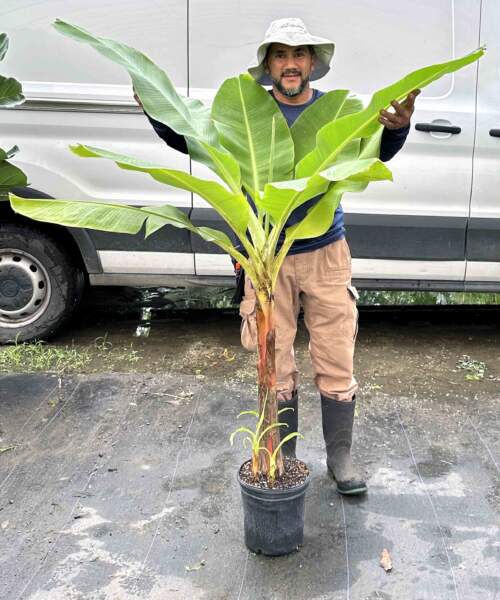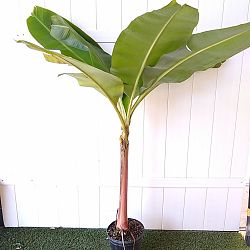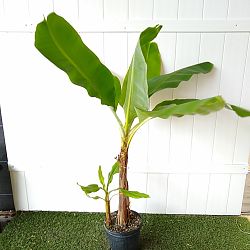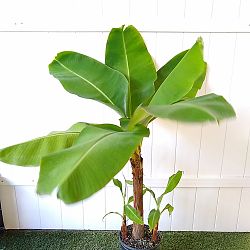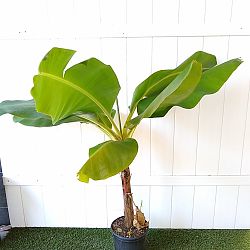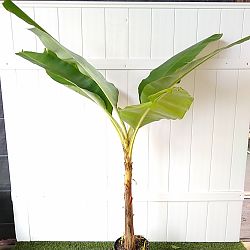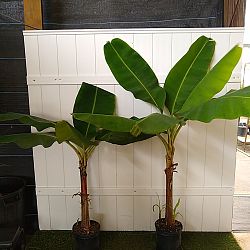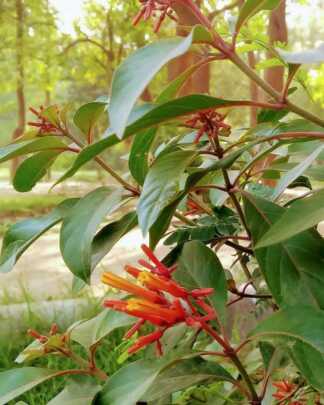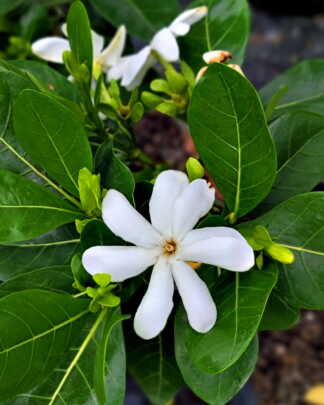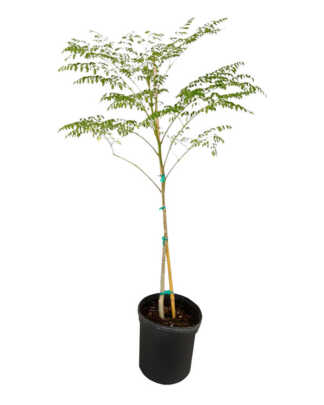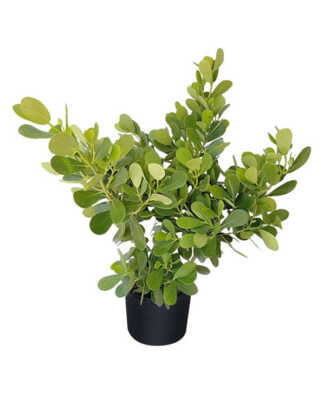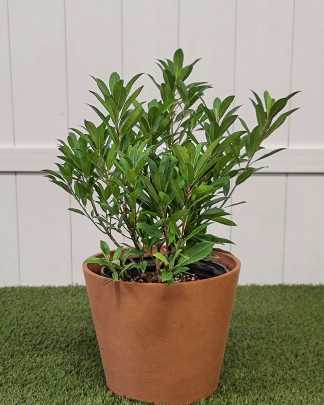Description
Caring for your Banana Tree
The Banana Plant (Musa spp.) is a tropical and subtropical favorite known for its lush, large leaves and, in some cases, the delicious fruits it produces. Despite their tree-like appearance, banana plants are technically giant herbaceous perennials. They make for excellent focal points in the garden or large container plants for patios and indoors. With the right conditions and care, banana plants can thrive in a variety of environments, adding a tropical vibe to your landscape.
Light
Banana plants thrive in full sun, needing at least 6-8 hours of bright, direct sunlight per day. When grown outdoors, choose a sunny spot to encourage strong growth and healthy leaves. If you’re growing the banana plant indoors, place it near a bright, south-facing window where it can receive plenty of light.
While banana plants can tolerate partial shade, especially in very hot climates, too much shade will result in slower growth and may reduce the likelihood of the plant flowering or fruiting. If you live in a region with extremely hot summers, providing light shade during the hottest part of the day can prevent leaf burn.
Water
Banana plants are heavy water consumers and need consistently moist soil, especially during the growing season (spring through fall). Water your banana plant regularly to keep the soil evenly moist, but not waterlogged. During the summer, you may need to water it daily, especially if it’s grown in full sun or in a container.
Ensure the soil has good drainage to prevent standing water, as waterlogged roots can lead to root rot. A good rule of thumb is to water when the top inch of soil feels dry to the touch. In winter, reduce watering as the plant’s growth slows, allowing the soil to dry out slightly between waterings. Keep in mind that bananas have shallow roots, so they don’t tolerate drought well.
Humidity is another key factor for banana plants. They prefer humidity levels above 50%, which can be challenging in dry climates or indoors, particularly in the winter. If growing indoors, you can increase humidity by placing the plant on a pebble tray filled with water, using a humidifier, or misting the leaves regularly.
Temperature
As tropical plants, bananas thrive in warm, humid environments. They grow best in temperatures between 75°F and 95°F (24°C to 35°C). While they can tolerate slightly cooler temperatures, anything below 50°F (10°C) can slow growth, and temperatures below 32°F (0°C) may damage or kill the plant.
If you’re growing banana plants indoors or in cooler climates, you’ll need to protect them from cold drafts and sudden drops in temperature. During winter, if you live in an area that experiences frost, bring potted banana plants indoors or cover outdoor plants with frost cloth.
Soil
Banana plants prefer well-draining, nutrient-rich soil. A loamy or sandy soil with plenty of organic matter is ideal. The soil should retain moisture but drain excess water efficiently to prevent root rot. When planting in the ground, mix compost or well-rotted manure into the soil to provide a rich, fertile environment for your banana plant.
If growing in containers, use a high-quality potting mix designed for tropical plants or a mix that includes perlite and peat moss to ensure good drainage. Choose a container that is large enough to accommodate the plant’s fast-growing root system, and make sure it has drainage holes to allow excess water to escape.
Fertilization
Banana plants are heavy feeders and benefit from regular fertilization to support their rapid growth. During the growing season (spring through summer), fertilize your banana plant every 2-4 weeks with a balanced, water-soluble fertilizer. A fertilizer with a higher nitrogen content will help promote lush, green foliage, which is essential for photosynthesis and overall plant health.
In addition to regular fertilization, banana plants also benefit from organic matter such as compost or well-rotted manure. Apply a thick layer of compost or organic mulch around the base of the plant in spring and mid-summer to boost nutrient availability and help retain soil moisture.
During the winter, when the plant’s growth slows, reduce the frequency of fertilization or stop feeding altogether until the following spring.
Pruning and Maintenance
Banana plants require minimal pruning, but regular maintenance will keep them looking healthy. As the plant grows, the lower leaves may turn yellow and die back. Remove these dead or damaged leaves by cutting them off at the base with clean, sharp pruning shears. This will help the plant direct its energy toward new growth and reduce the risk of pests and disease.
If your banana plant produces flowers and begins fruiting, you may need to remove the spent flower stalk after harvesting the fruit. Banana plants usually die back after fruiting but will produce new shoots, known as “pups,” from the base of the plant. These pups can be left to grow or separated to propagate new plants.
Pest and Disease Control
Banana plants are relatively hardy but can be affected by a few pests and diseases. Common pests include aphids, spider mites, and mealybugs. Regularly inspect your banana plant for signs of pests, such as sticky residue, small holes in the leaves, or webbing. Treat infestations with insecticidal soap, neem oil, or by rinsing the plant with water to remove pests.
Banana plants can also be susceptible to fungal diseases like leaf spot or root rot, especially in overly wet or humid conditions. To prevent these issues, avoid overwatering and ensure proper air circulation around the plant. If you notice dark spots or yellowing on the leaves, remove the affected foliage and treat the plant with a fungicide if necessary.
Harvesting
If you’re growing a fruiting banana variety, you can expect to see flowers emerge after 10-15 months of growth. The fruiting stalk will develop after the flowers bloom, with bananas typically taking 2-6 months to ripen.
Once the bananas are plump and green or slightly yellow, you can harvest them by cutting the entire stalk. Allow the bananas to ripen off the plant in a warm area, away from direct sunlight.

